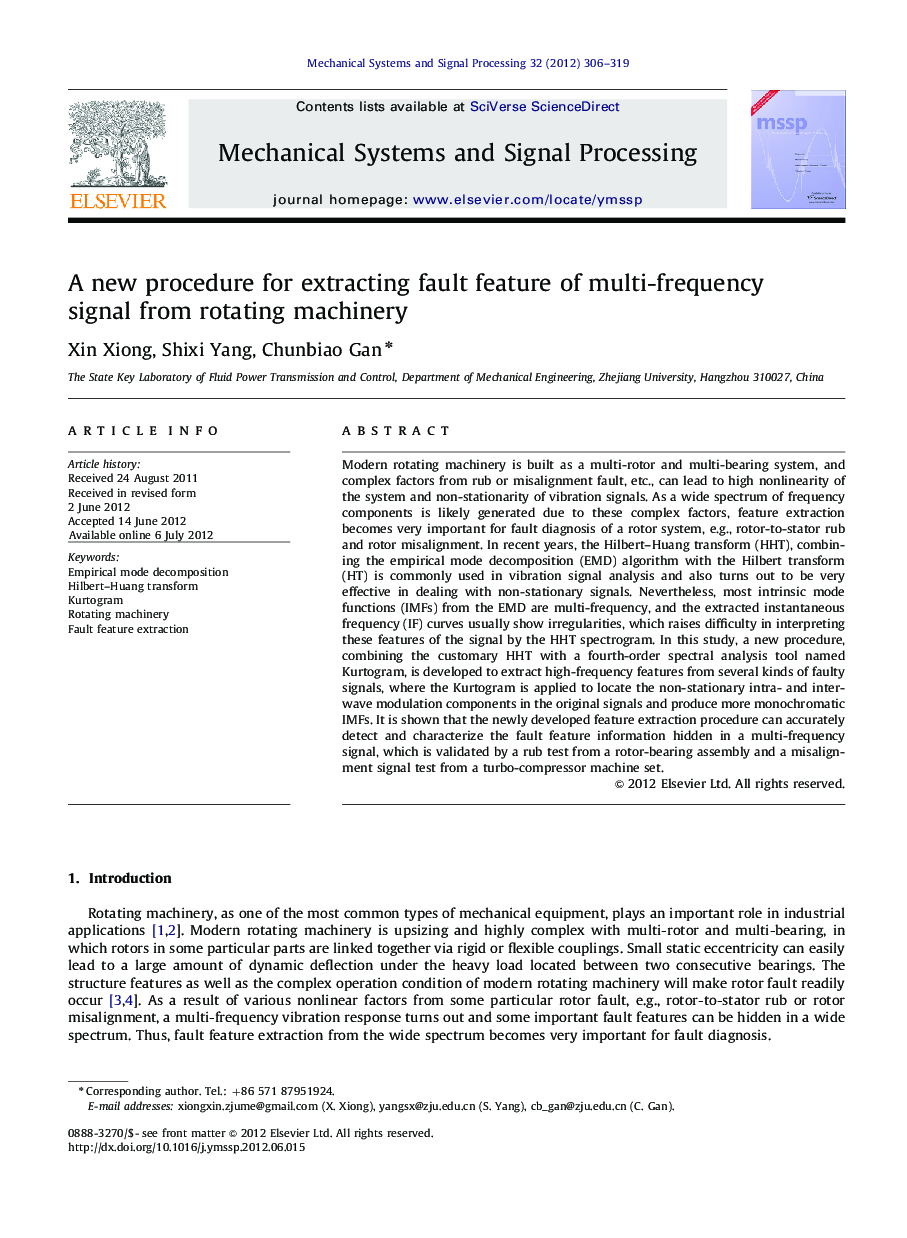| Article ID | Journal | Published Year | Pages | File Type |
|---|---|---|---|---|
| 561383 | Mechanical Systems and Signal Processing | 2012 | 14 Pages |
Modern rotating machinery is built as a multi-rotor and multi-bearing system, and complex factors from rub or misalignment fault, etc., can lead to high nonlinearity of the system and non-stationarity of vibration signals. As a wide spectrum of frequency components is likely generated due to these complex factors, feature extraction becomes very important for fault diagnosis of a rotor system, e.g., rotor-to-stator rub and rotor misalignment. In recent years, the Hilbert–Huang transform (HHT), combining the empirical mode decomposition (EMD) algorithm with the Hilbert transform (HT) is commonly used in vibration signal analysis and also turns out to be very effective in dealing with non-stationary signals. Nevertheless, most intrinsic mode functions (IMFs) from the EMD are multi-frequency, and the extracted instantaneous frequency (IF) curves usually show irregularities, which raises difficulty in interpreting these features of the signal by the HHT spectrogram. In this study, a new procedure, combining the customary HHT with a fourth-order spectral analysis tool named Kurtogram, is developed to extract high-frequency features from several kinds of faulty signals, where the Kurtogram is applied to locate the non-stationary intra- and inter-wave modulation components in the original signals and produce more monochromatic IMFs. It is shown that the newly developed feature extraction procedure can accurately detect and characterize the fault feature information hidden in a multi-frequency signal, which is validated by a rub test from a rotor-bearing assembly and a misalignment signal test from a turbo-compressor machine set.
► Multi-frequency IMFs often raise difficulty in fault diagnosis. ► We develop a new procedure by combining the HHT with the Kurtogram. ► Multi-frequency features of an artificial signal are displayed clearly. Rub and misalignment signals are further employed to evaluate the present procedure.
